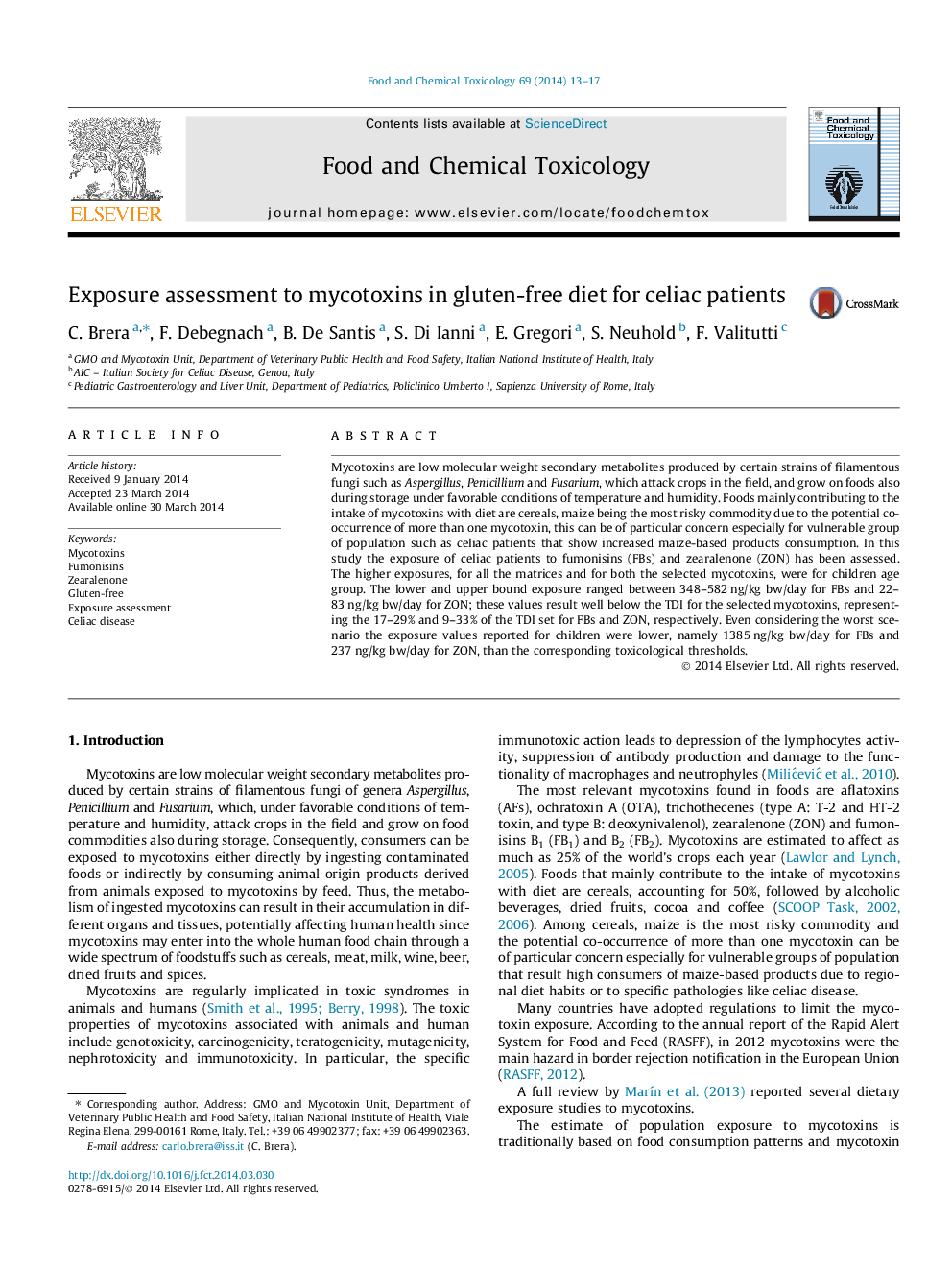| Article ID | Journal | Published Year | Pages | File Type |
|---|---|---|---|---|
| 5850235 | Food and Chemical Toxicology | 2014 | 5 Pages |
Abstract
Mycotoxins are low molecular weight secondary metabolites produced by certain strains of filamentous fungi such as Aspergillus, Penicillium and Fusarium, which attack crops in the field, and grow on foods also during storage under favorable conditions of temperature and humidity. Foods mainly contributing to the intake of mycotoxins with diet are cereals, maize being the most risky commodity due to the potential co-occurrence of more than one mycotoxin, this can be of particular concern especially for vulnerable group of population such as celiac patients that show increased maize-based products consumption. In this study the exposure of celiac patients to fumonisins (FBs) and zearalenone (ZON) has been assessed. The higher exposures, for all the matrices and for both the selected mycotoxins, were for children age group. The lower and upper bound exposure ranged between 348-582Â ng/kg bw/day for FBs and 22-83Â ng/kg bw/day for ZON; these values result well below the TDI for the selected mycotoxins, representing the 17-29% and 9-33% of the TDI set for FBs and ZON, respectively. Even considering the worst scenario the exposure values reported for children were lower, namely 1385Â ng/kg bw/day for FBs and 237Â ng/kg bw/day for ZON, than the corresponding toxicological thresholds.
Related Topics
Life Sciences
Agricultural and Biological Sciences
Food Science
Authors
C. Brera, F. Debegnach, B. De Santis, S. Di Ianni, E. Gregori, S. Neuhold, F. Valitutti,
